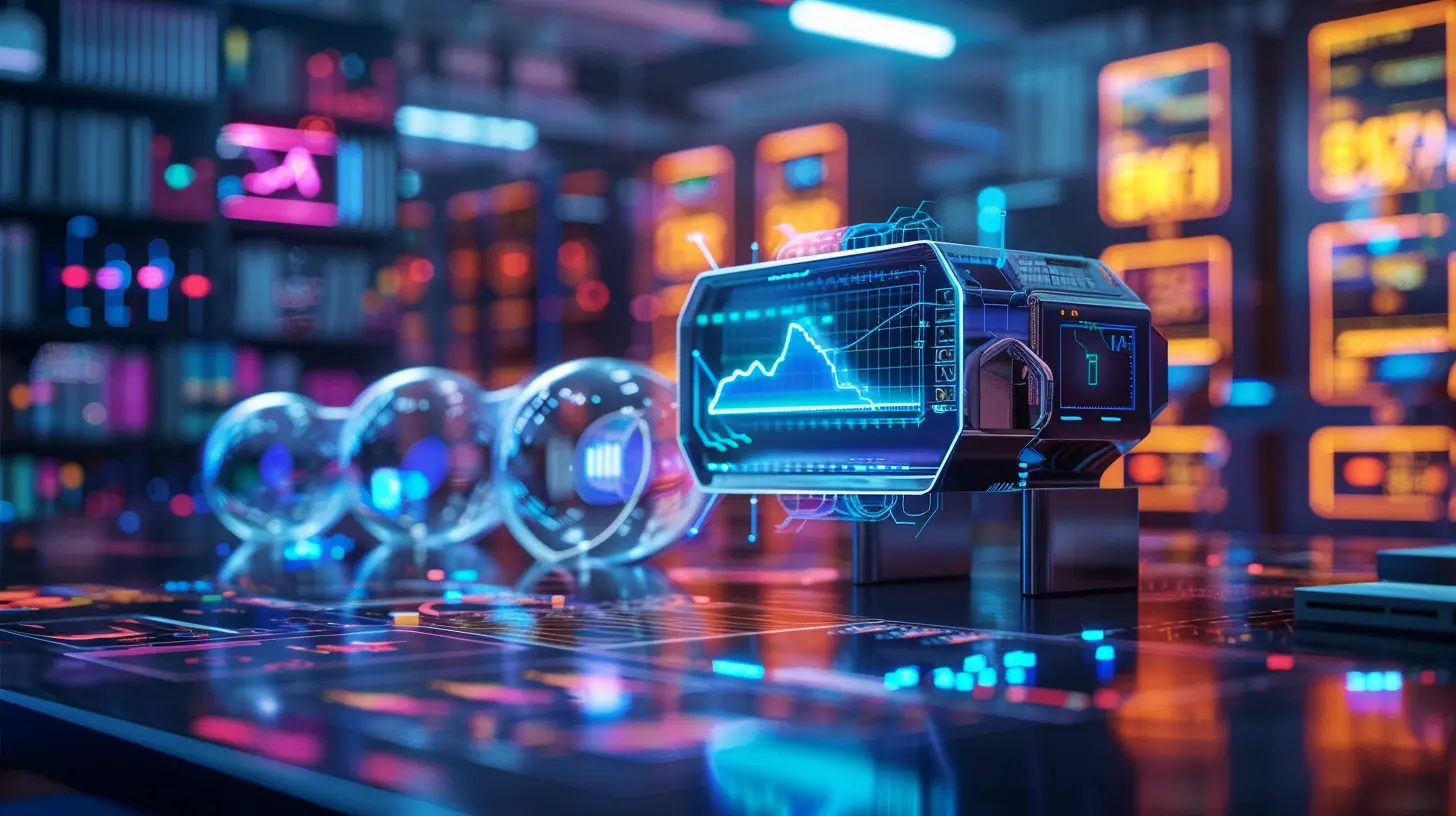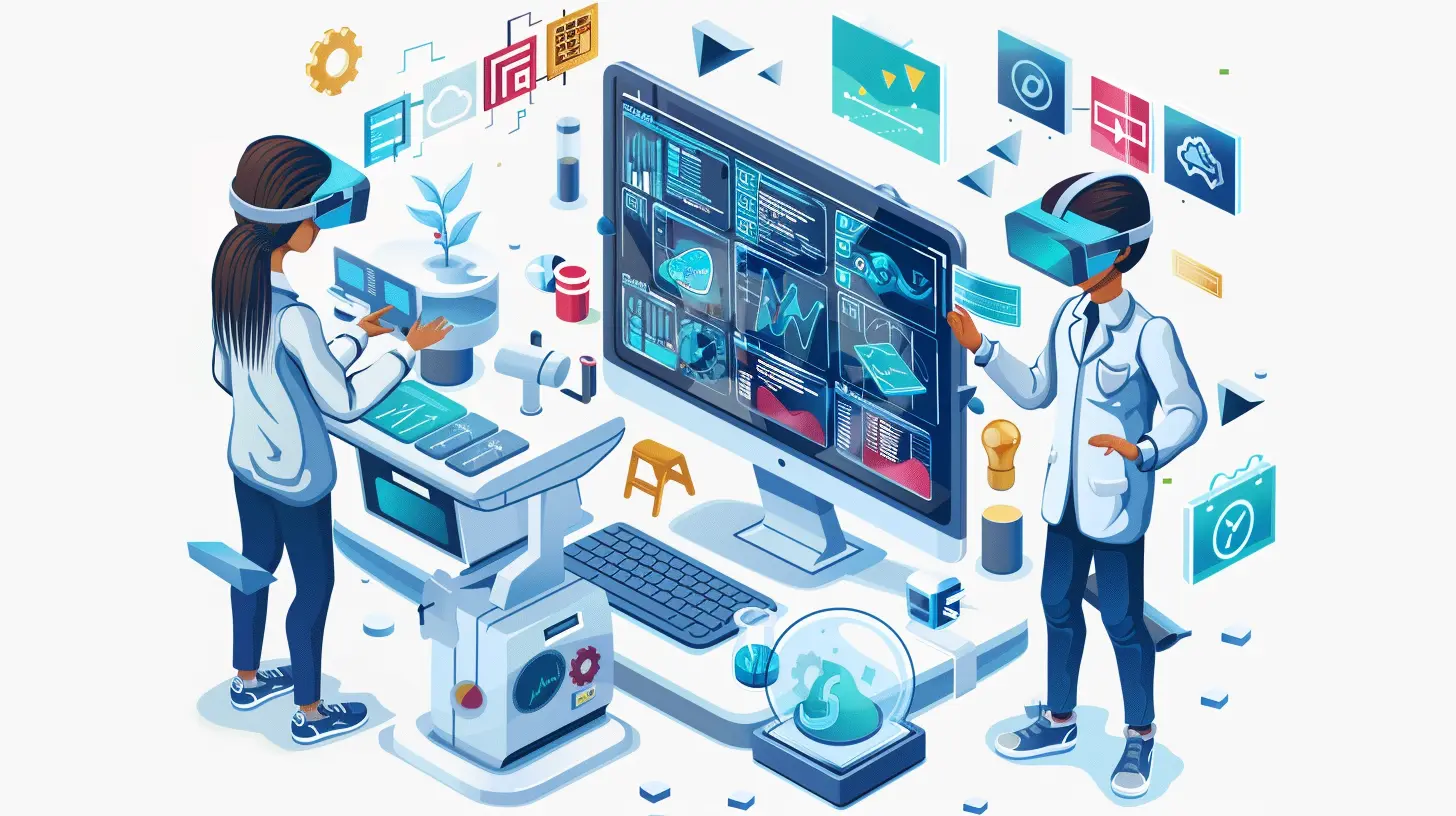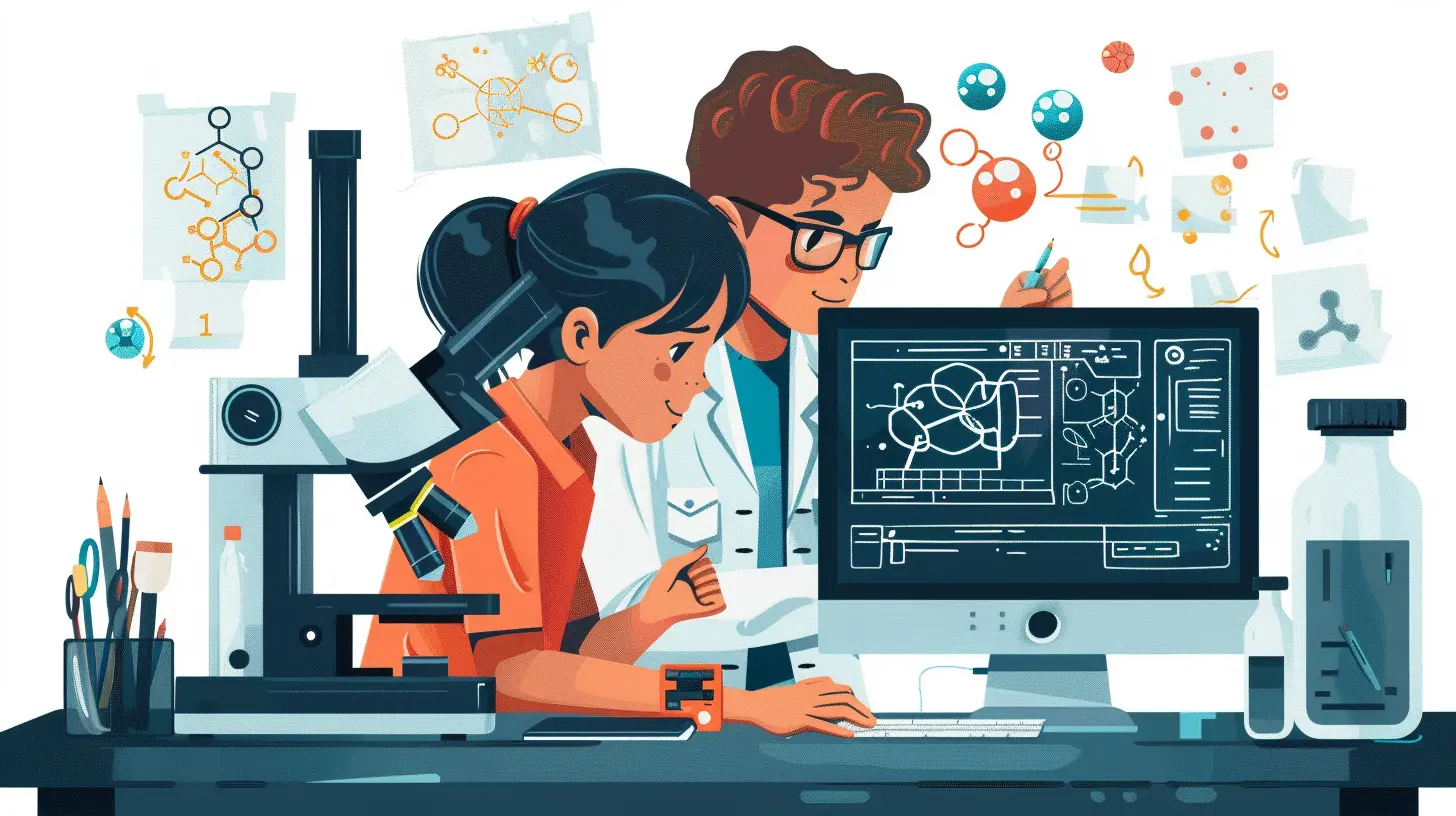How to Use Virtual Labs to Enhance STEM Education
22 November 2025
Let’s face it—the world is changing fast, and so is the way we learn. Especially in STEM (Science, Technology, Engineering, and Math) education, where hands-on experiences are crucial, virtual labs are stepping in and shaking things up in the best way possible.
Gone are the days of needing bulky lab equipment or being physically present in a school lab to conduct experiments. Today, with just a computer and an internet connection, students can explore the intricacies of chemistry reactions, physics simulations, coding experiments, and much more—without ever touching a Bunsen burner. But how exactly do virtual labs enhance STEM education? And how can educators and students make the most of them?
Let’s dive into the nitty-gritty of how virtual labs are shaping the future of STEM learning.
What Are Virtual Labs, Anyway?
Virtual labs are interactive, online simulations that replicate the real-life lab experience. Think of them as video games designed for education, where you're the player performing realistic experiments in a controlled digital environment.They offer:
- Simulations of complex experiments
- Real-time analysis and results
- 3D visualizations of chemical reactions, physics phenomena, and engineering models
- Self-paced learning opportunities
Virtual labs aren’t about replacing physical labs, but rather enhancing and complementing them.
Why STEM Needs a Virtual Boost
STEM is one of those fields where learning by doing isn’t just helpful—it’s critical. But schools often run into barriers like:- Limited resources
- Expensive lab equipment
- Safety risks
- Time constraints
- Accessibility issues
Virtual labs solve most of these problems. If a student wants to run a potentially risky chemistry experiment or explore the anatomy of a frog without actually dissecting one, they can do so in a virtual environment safely and ethically.
How Virtual Labs Fit into Modern Classrooms
You might be wondering, "Okay, but how does this work in a real classroom setting?" Let’s break it down.1. Flipping the Classroom
Instead of spending class time on lectures, teachers can assign virtual lab work as homework or pre-class prep. Students come to class already familiar with the topic, ready for in-depth discussion or collaborative work. It's like walking into the kitchen with your ingredients prepped—that cooking (in this case, learning) gets a lot smoother.2. Personalized Learning
One size doesn’t fit all. Virtual labs let students move at their own pace. Whether a student flies through experiments or needs time to repeat and understand, they can work in a way that suits them best. No pressure, no judgment—just learning.3. Scalable for Large Groups
Imagine trying to get a class of 40 students to perform a single chemistry experiment with limited equipment. A logistical nightmare, right? Virtual labs can handle hundreds of students doing the same simulation simultaneously. No setup, no cleanup—just pure, uninterrupted education.
Key Benefits of Virtual Labs in STEM Education
Let’s get into the specifics of why virtual labs are such a game-changer.1. Safety Without Compromise
Ever seen a sodium chunk explode in water? It’s fascinating—but dangerous. Virtual labs let students experience high-risk experiments without any real-world danger. No need for safety goggles or chemical burns here.2. Cost-Effective Learning
Lab equipment ain’t cheap. Neither are constant refills of chemicals. With virtual labs, schools get access to hundreds of experiments without ongoing costs. It’s a win-win for institutions and students alike.3. Access Anytime, Anywhere
Geography, weather, transportation—none of these get in the way. Students can access virtual labs from home, a coffee shop, or even a bus station (OK, maybe not ideal). Point is, location is no longer a barrier.4. Instant Feedback and Analytics
Virtual labs often provide immediate feedback. Make a mistake in the experiment? You’ll know right away. Plus, teachers can track performance metrics and identify where students struggle. That’s like having a GPS for learning.5. Encouraging Curiosity
With fewer limitations, students feel free to experiment more. Want to re-run the same physics simulation ten times? Go for it! Virtual labs make it okay to be curious and persistent, building a true spirit of scientific inquiry.How to Integrate Virtual Labs Into Your STEM Curriculum
Using virtual labs isn’t about just plugging in a simulation and hitting "play." It requires thoughtful integration. Here's how educators and students can get the best results:1. Start With Learning Goals
Before you dive into the digital realm, ask yourself: What do I want my students to learn? Whether it's Newton’s laws or genetic mutations, set clear objectives to guide which virtual lab best fits your needs.2. Choose the Right Platform
There are loads of tools out there—some free, some paid. Platforms like PhET Interactive Simulations, Labster, ChemCollective, and PraxiLabs have great reputations. Explore a few and pick the one that complements your classroom style and curriculum.3. Blend with In-Person Labs
Don’t ditch the real labs just yet. Use virtual labs to prep students for physical experiments. Think of it as flight simulation before real piloting. It builds confidence and understanding before diving into the real deal.4. Encourage Reflection and Collaboration
After students complete a virtual lab, encourage them to write about what they learned, what went wrong, and what surprised them. Better yet, let them discuss it in groups. Collaboration turns passive observation into active learning.5. Keep Things Fun and Challenging
Gamify where you can. Many virtual labs include achievements, levels, and challenges—use these features to keep learners engaged and motivated. Everyone loves a win, even in a lab simulation!Challenges and How to Overcome Them
Let’s be real. Virtual labs aren’t flawless. Here are some common hurdles and how to jump them:1. Tech Access
Not all students have high-speed internet or personal devices. Schools can help bridge this gap by providing equipment or creating on-campus computer access points.2. Digital Literacy
Some students (and teachers) may struggle with new tools. Training and trial runs can ease the transition. Start small and build confidence step-by-step.3. Limited Physical Skill Practice
Sure, you can’t exactly learn how to pipette or solder in a virtual lab. That’s where hybrid learning kicks in—use virtual labs for theory and planning, and real labs for skill application.Real-Life Examples: Virtual Labs in Action
Let’s take a look at how some schools and programs are using virtual labs effectively.- High School Biology Class: The teacher uses a frog dissection simulation before the actual lab. Students walk in already knowing what to expect, reducing anxiety and improving focus.
- University Physics Course: Professors assign weekly PhET simulations to reinforce theories taught in lectures. Students perform better in exams and report stronger conceptual understanding.
- Engineering Bootcamp: Learners prototype circuits using Tinkercad before moving to breadboards. Debugging virtually saves time and frustration.
These examples show how virtual labs can work hand-in-hand with traditional methods to deliver a richer STEM experience.
The Future of Virtual Labs in STEM
So, what’s next? Expect virtual labs to become even more immersive with the integration of VR (Virtual Reality) and AR (Augmented Reality). Imagine students walking through a plant cell or manipulating atoms with hand gestures. That’s not just science fiction—it’s the future of education.AI will also play a big role, offering personalized learning paths and intelligent feedback to help students reach their full potential.
Final Thoughts
Virtual labs aren’t a magic cure-all for STEM education, but they’re a powerful tool that’s here to stay. They open doors, spark curiosity, and make learning more accessible and engaging. Whether you're an educator looking to spice up your teaching or a student eager to explore the world of science without limitations, virtual labs offer endless opportunities.So go ahead—put on your (virtual) lab coat and start experimenting!
all images in this post were generated using AI tools
Category:
Virtual ClassroomsAuthor:

Olivia Chapman

